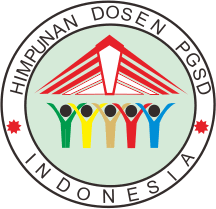Kemandirian belajar siswa ditinjau dari gaya belajar pada pembelajaran tema 3 dengan model scaffolding di kelas IV sekolah dasar
Abstract
The purpose of this research is to describe students' learning independence viewed from learning styles on learning with Scaffolding model. Type of research used qualitative descriptive methods with case study design. The research subjects were fourth grade students and teachers. Sample technique was purposive sample technique, data collection was non-participatory observation, in-depth interviews and document studies. Learning process scaffolding carried out by the teacher is (1) explaining the learning material, (2) determining the Zone Of Proximal Development (ZPD) based on the value of previous learning outcomes, (3) Grouping students according to ZPD, (4) giving group assignments (5) encouraging students to complete tasks independently in groups, (6) providing assistance in the form of motivation, giving examples, (7) directing students to teach each other to their friends, (8) conclude lessons, give evaluation questions, and homework. The highest aspect of learning independence is self efficacy), the lowest aspect is diagnosis of learning needs. Learners with visual learning styles tend to show aspects of the diagnosis of learning needs. Learners with auditory learning styles tend to show aspects of self-efficacy and view difficulties as challenges. Learners with kinesthetic learning styles tend to show aspects of diagnosing learning needs, learning settings, and self-efficacy.
Keywords
learning independence; learning style; scaffolding learning model
Full Text:
PDFRefbacks
- There are currently no refbacks.



